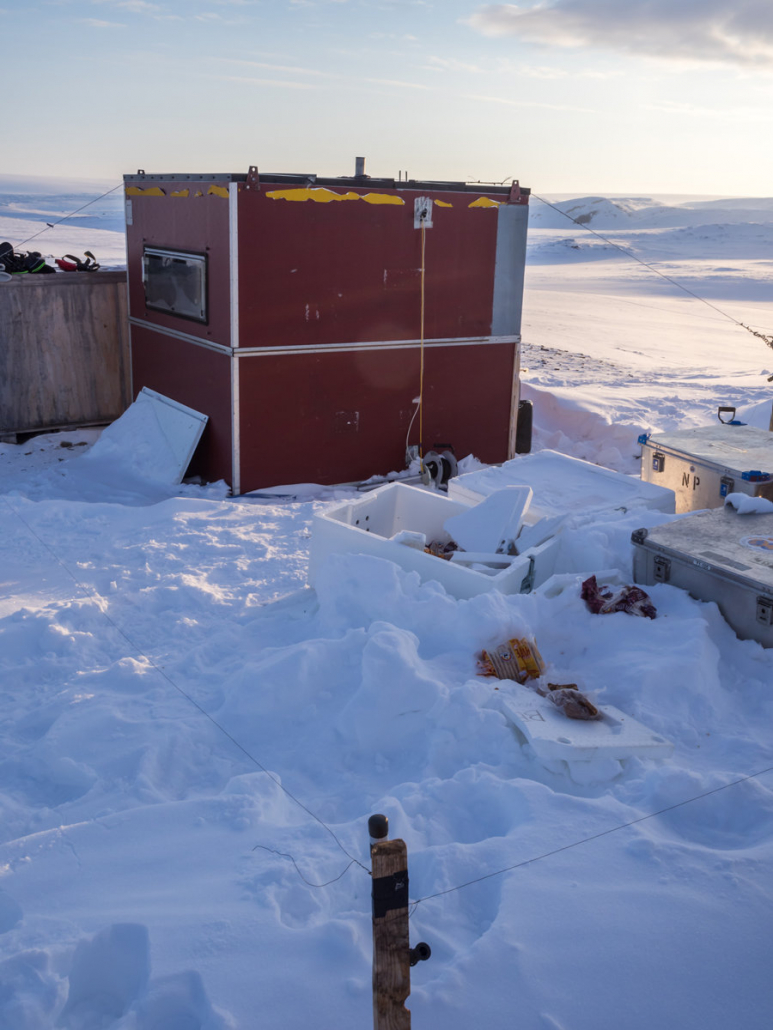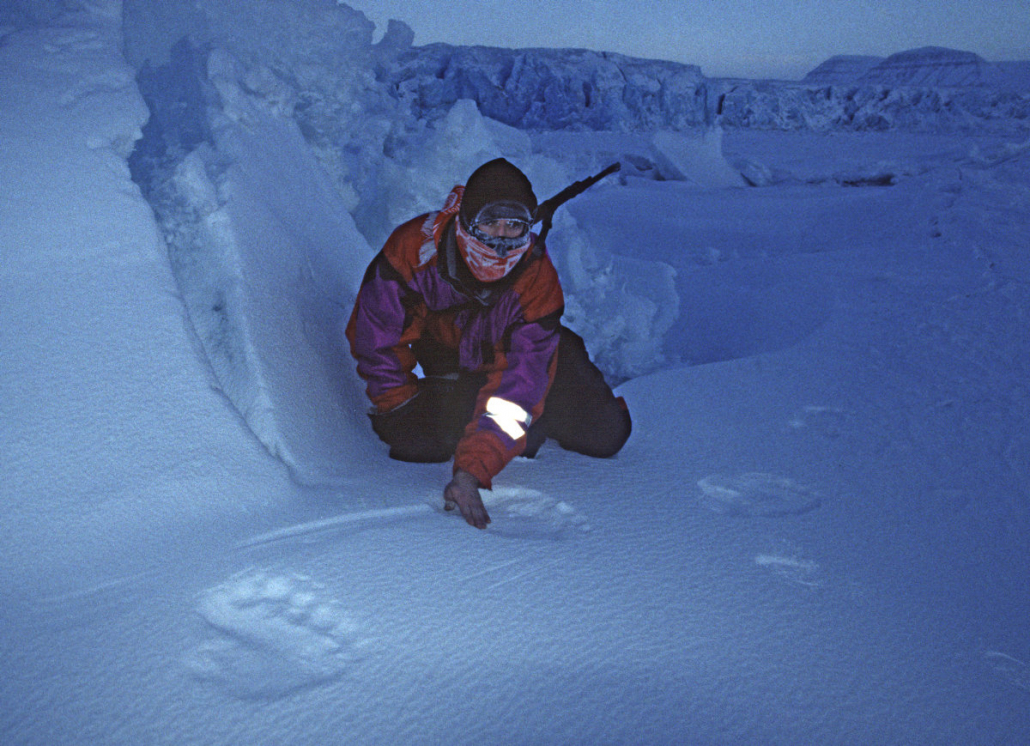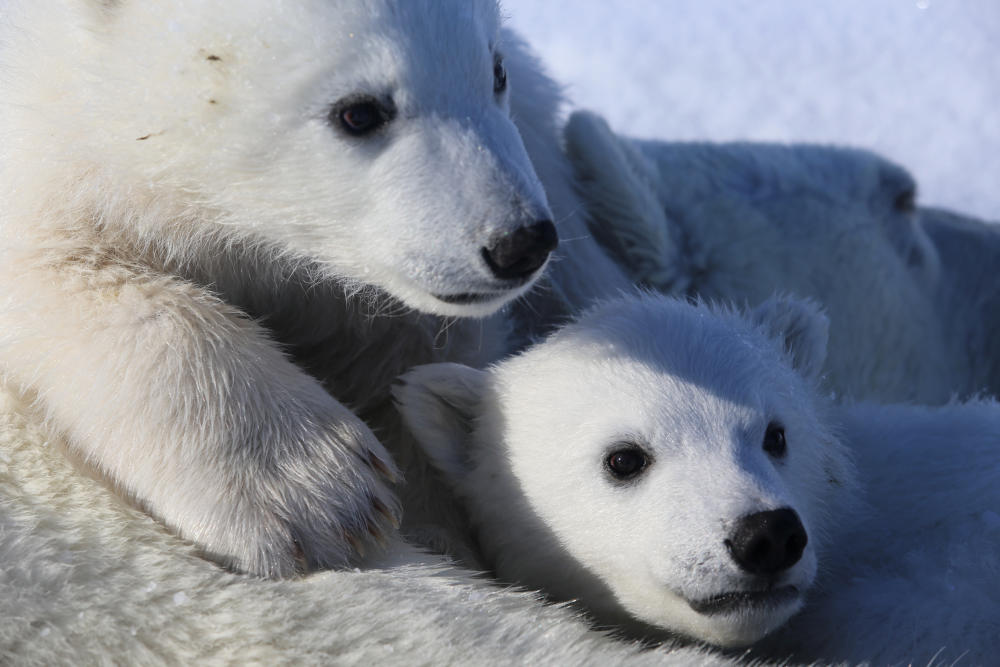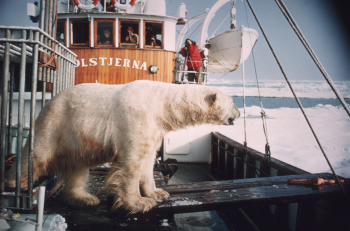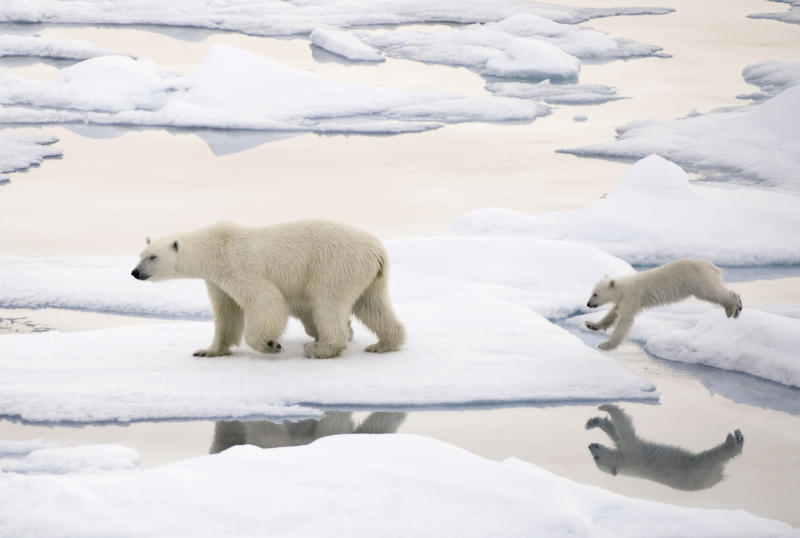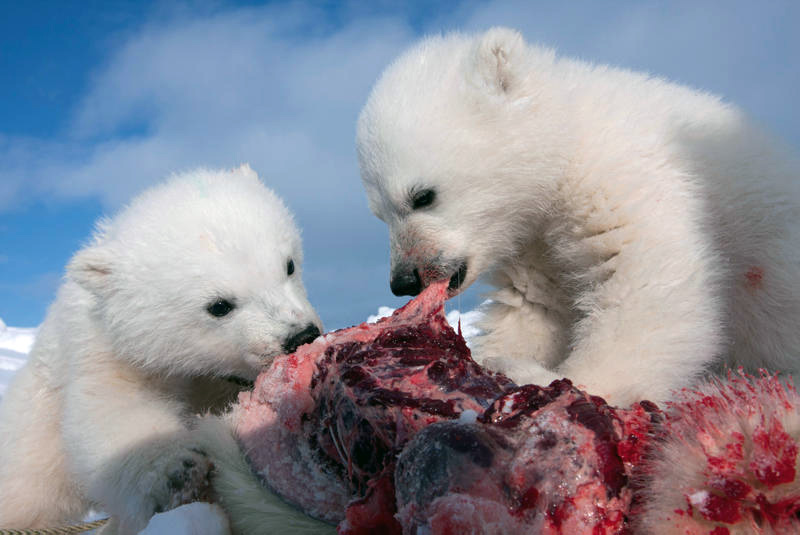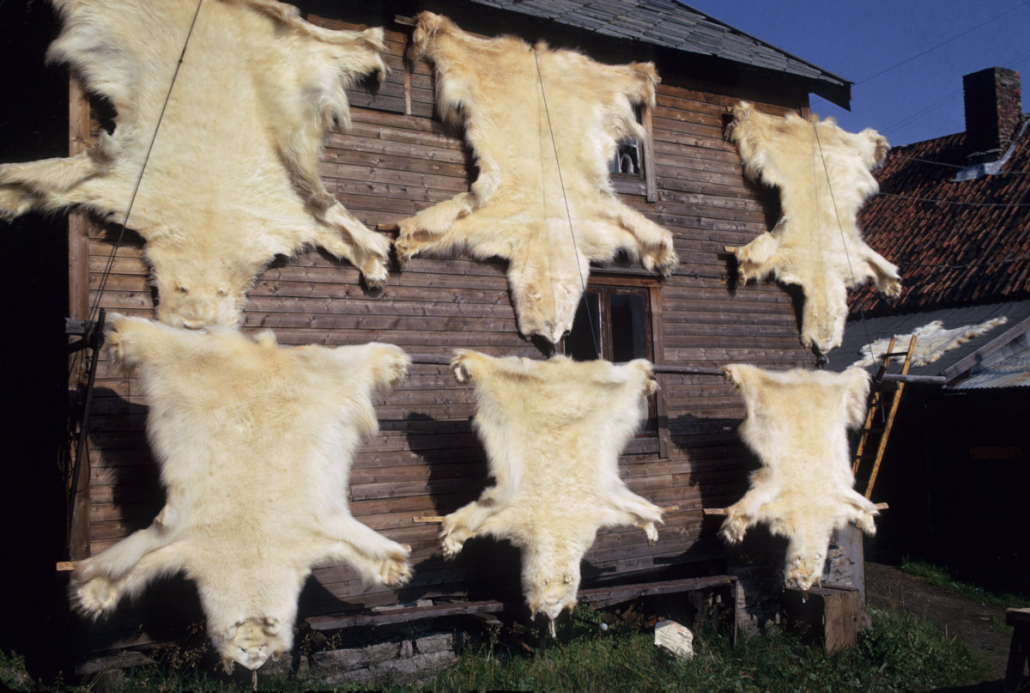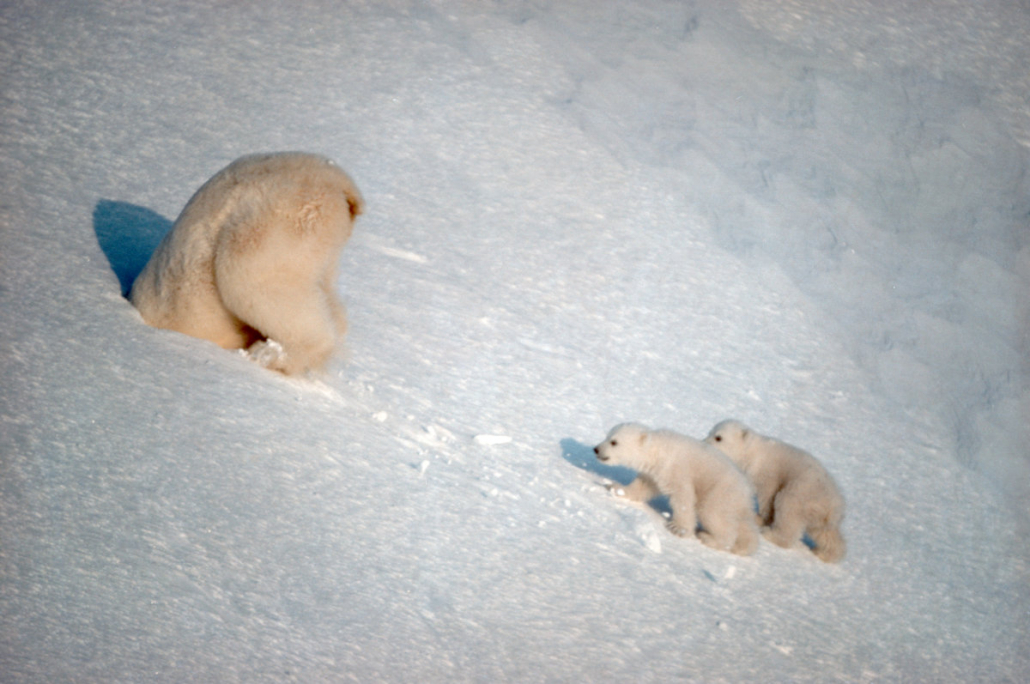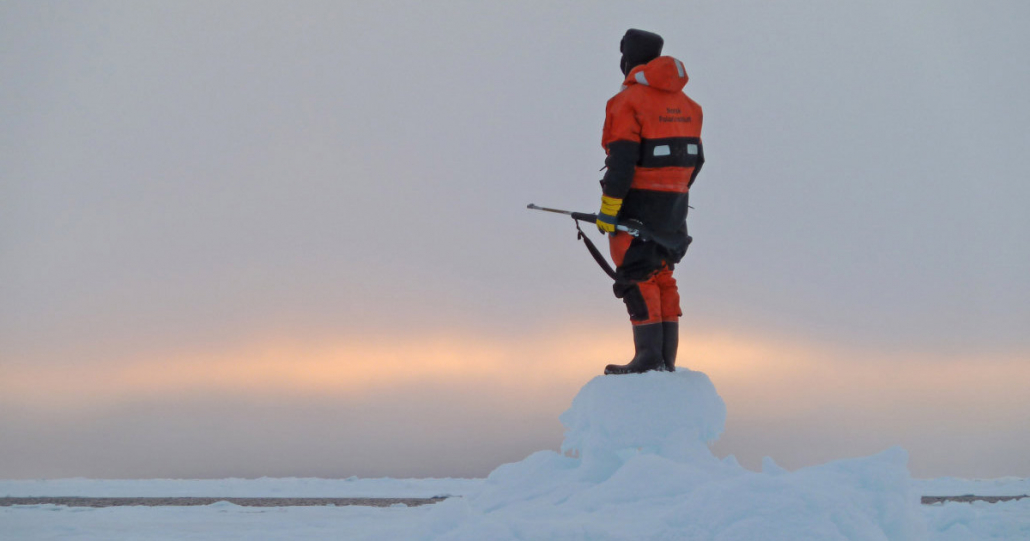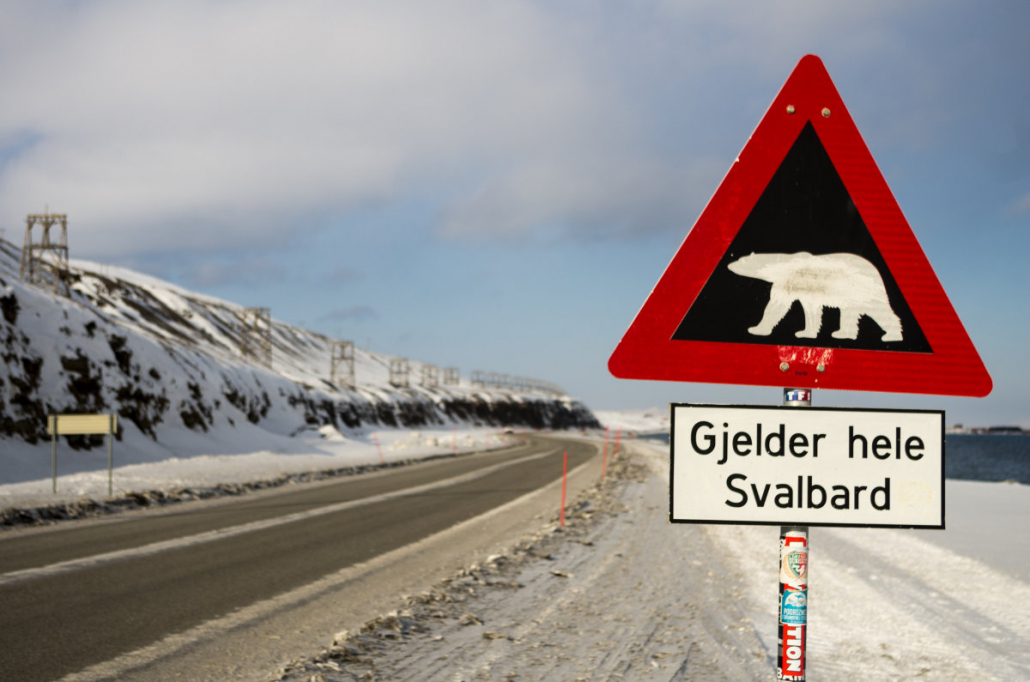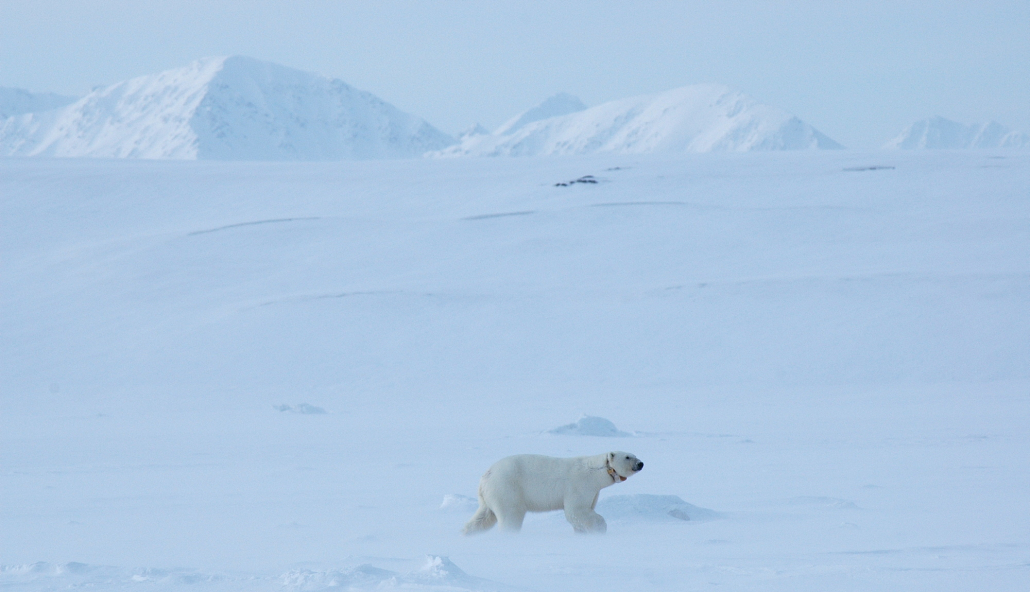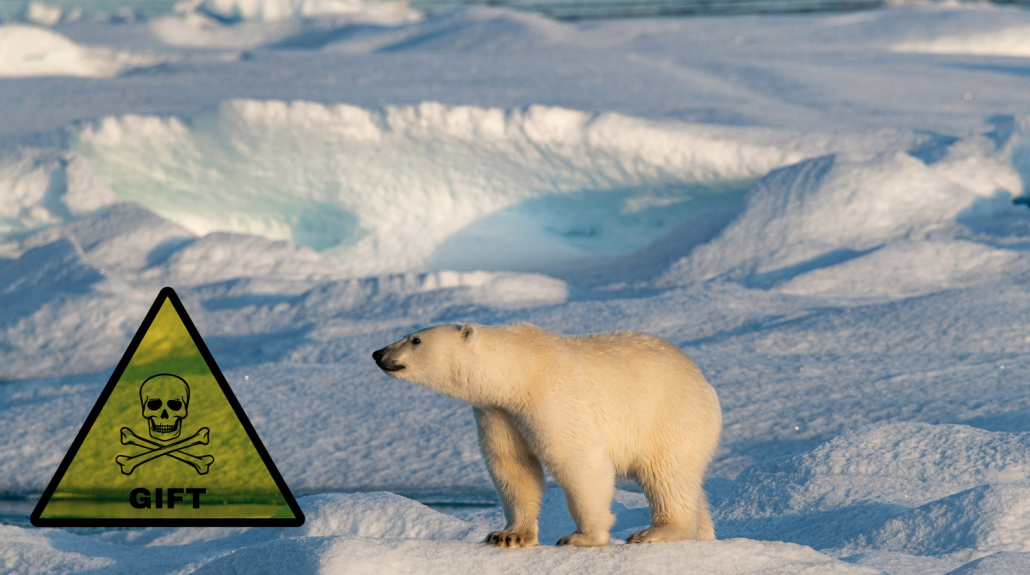Anyone travelling in areas where there are polar bears needs to know how to behave when in their realm in order to avoid confrontation. Our behaviour when coming into contact with polar bears is crucial for their and our safety. The Norwegian authorities find it important to protect the polar bears and their habitats.
Confrontations with polar bears
The polar bear is a dangerous animal, and unfortunately in Svalbard confrontations arise with tragic outcomes for both people and polar bears. Almost every year in Svalbard, polar bears are shot due to encounters with people. Over recent decades, human lives have been lost and numerous people have been injured. We must therefore try to avoid critical encounters and behave sensibly when we meet polar bears. By following a few simple pieces of advice, it is possible to reduce the risk of injury and death and travel in areas where polar bears live with a greater sense of safety.
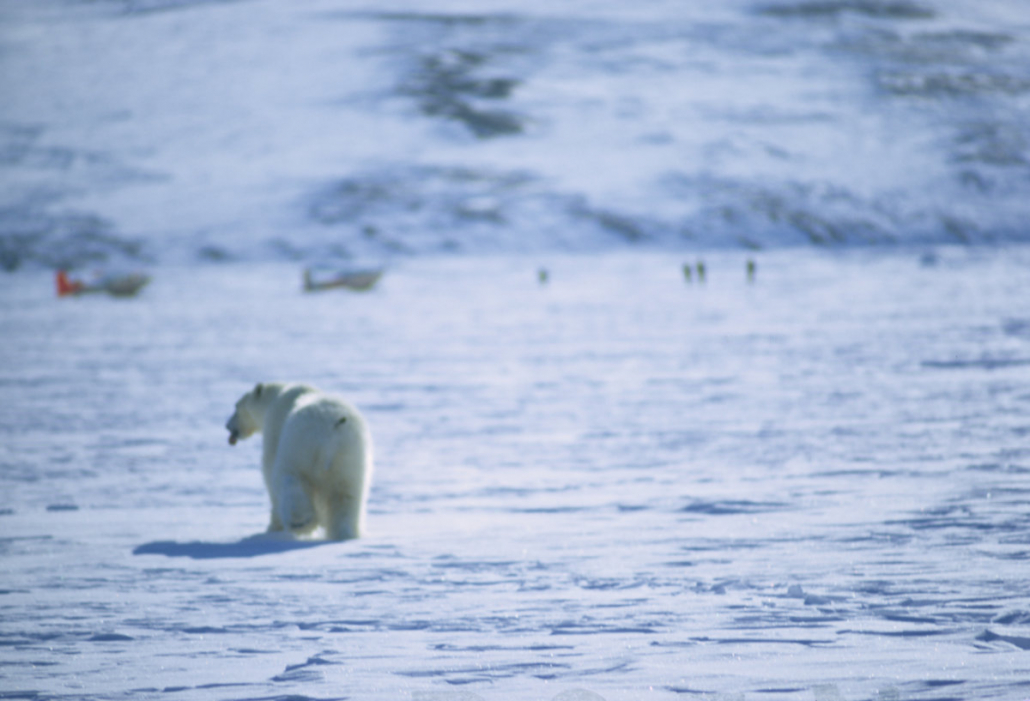
A polar bear approaches people. Photo: Thor S. Larsen/ Norwegian Polar Institute
Where is the greatest risk of encountering a polar bear?
When out on a trip in Svalbard, you need to be vigilant and monitor the surrounding area. Polar bears can be encountered anywhere in Svalbard in the summer, along the beaches, in the valleys and up on the glaciers. In winter, of course, the sea ice is a favourite of the bears, especially areas with fast ice with good habitats for ringed seals.
Curious and unpredictable polar bears
From experience, most confrontations between people and bears result from the polar bear’s inherent curiosity, which derives from its adaptation to a life in a very barren and inhospitable environment with scant access to food. All potential food sources must be checked out. Add in the bear’s extreme patience and total unpredictability and it is clear we have to be vigilant. It is practically impossible to determine in advance whether a bear will continue strolling along the beach or turn and run at you at great speed, so be prepared for both.
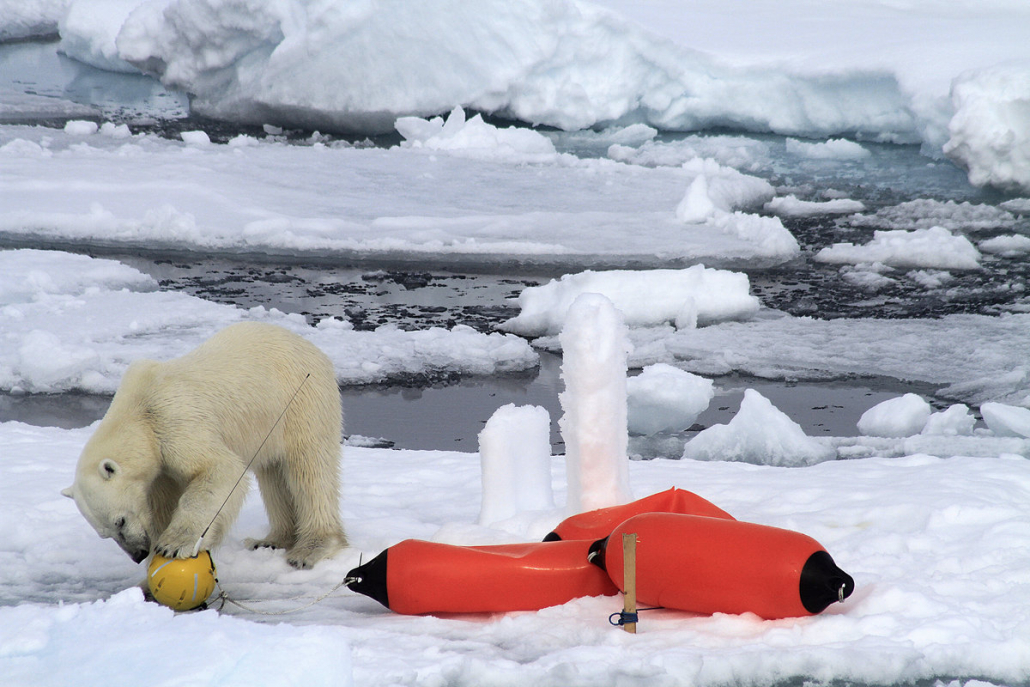
A polar bear examines research instruments. Photo: Marcus Porcires / Norwegian Polar Institute
Weapons and deterrence
The objective should be never to put yourself in a situation that is dangerous for you or the bear, but you need to be prepared for such a situation to arise. This means carrying a sufficiently powerful weapon when venturing beyond Svalbard’s settlements. A powerful rifle (of calibre .308 Win or 30-06 or more powerful) is the best weapon for protection against polar bears. Learn to handle it safely, both when not in use and when you need to shoot to hit in a stressful situation.
Also equip yourself with a flare gun, which is very effective at deterring curious polar bears. Do not wait to scare away a nearby polar bear; if it has time to make itself comfortable around the camp or cabin, it will often be much harder to scare away.
The flare gun saves the polar bear. The rifle saves people.
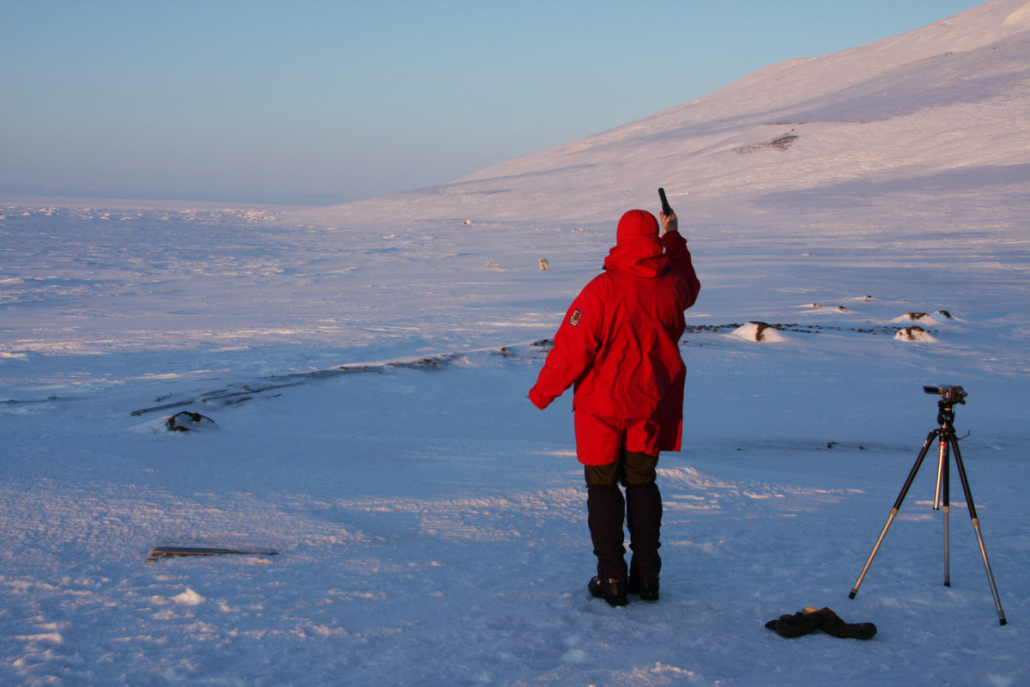
A polar bear approaching a cabin is spooked by a flashbang. Photo: Øystein Overrein / Norwegian Polar Institute
Protecting the camp
Many serious polar bear incidents in Svalbard occur when camping out. Avoid camping in areas where encounters with polar bears are likely, such as along the shoreline. Set up camp up from the beach, preferably with a good view in all directions. Do not camp ahead of a glacier terminus, and avoid areas where polar bears have recently been seen or there are fresh tracks.
But good protection of the camp remains the most important thing. All campsites should be encircled by tripwires or other polar bear warning systems. The very best solution is a polar bear guard on lookout, especially at night while others are sleeping. In a large group, polar bear guards can operate for a couple of hours each.
When in the camp, it is important to keep the gun nearby. Flare guns, other deterrents and extra cartridges must be stored so they are easy to find if a polar bear turns up.
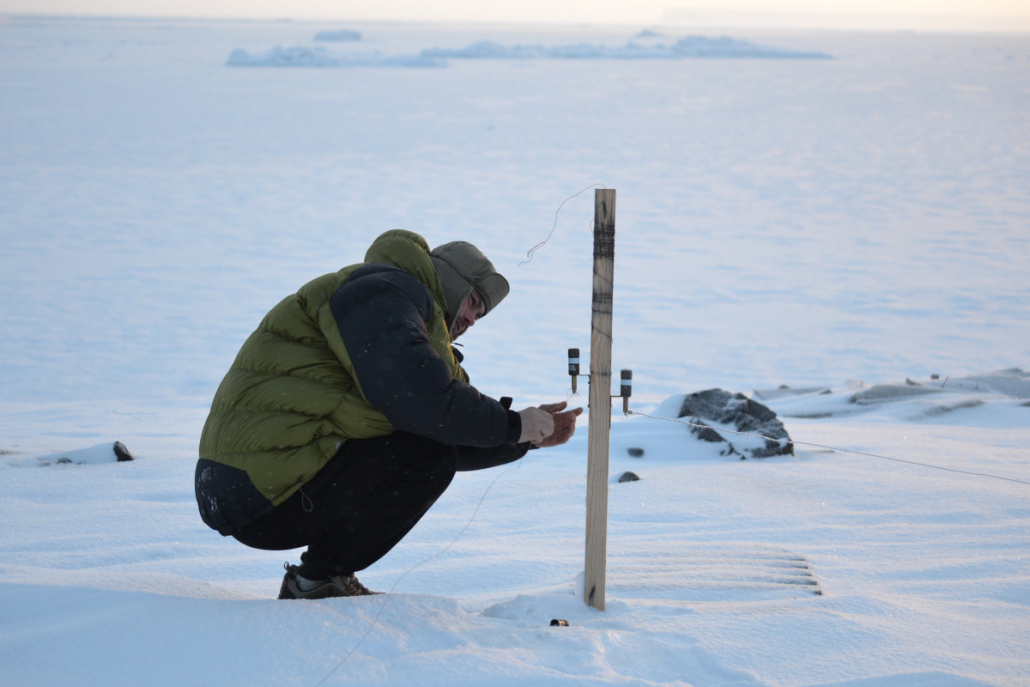
A tripwire is set up around the camp, warning of a polar bear visit. Photo: Øystein Overrein / Norwegian Polar Institute
Food smells attract polar bears
Polar bears can smell food at great distances and a bear will often be attracted to the smell of food from the campsite or cabin. This makes it important to store food and waste away from the sleeping area. Wrap food well to reduce odours, and be extra vigilant when cooking.
Keep a look out
Polar bears can be very shy and often do not like engine noise. The Norwegian Polar Institute has investigated how polar bears react to snowmobile noise. We found that many polar bears were frightened and hid even though the snowmobiles were far off, and long before their drivers spotted the bear. When on a snowmobile trip it is therefore a good idea to stop frequently and scan the area with binoculars, which will make it easier to see polar bears and avoid scaring them.
The same is true when travelling in small boats in summer, when the bears are often on land or on sea ice. If you spot a bear from a distance, you should avoid meeting it by keeping away from its course and instead move away from the bear. With binoculars, you can experience the animal undisturbed at a safe distance (which also applies to other wildlife).
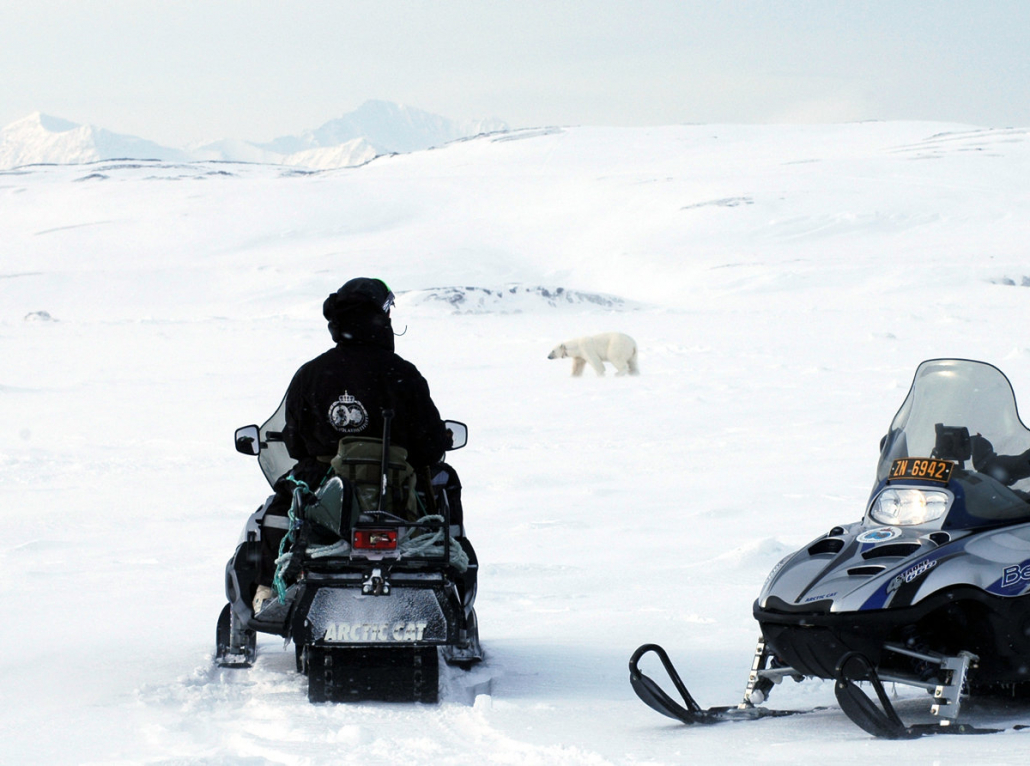
Important to keep your distance from the polar bear. Photo: Jon Aars, Norsk Polarinstitutt
Regulations
Several laws and regulations applicable to Svalbard are relevant for people’s behaviour towards polar bears. The Svalbard Environmental Protection Act, regulations concerning tourism and other traffic, regulations relating to hunting and trapping, and regulations relating to camping are designed to protect Svalbard’s environment, including polar bears and their habitats.
Throughout Svalbard, it is prohibited to lure, pursue or otherwise seek out polar bears in such a way as to disturb them or expose either bears or humans to danger (Section 30 of the Svalbard Environmental Protection Act). Consequently, you must also be prepared to meet polar bears out in the wild.

